Tomato Jos: Empowering Nigerian Farmers and Producing Food Products Locally

Tomato Jos: Empowering Nigerian Farmers and Producing Food Products Locally
Tomato Jos1 believes in the power of local food production for local consumption. Their business and operating models are rooted in the idea that successful, profit-driven small and mid-sized companies can help Nigerians improve their livelihoods by creating jobs, local economic growth, tools/infrastructure, and innovation/training. Tomato Jos has effectively aligned this vision, business model, and operating model to produce tomato paste by Nigerians, for Nigerians.
Business Model & Value Proposition: Tomatoes are a staple in West African cuisine, particularly in rice dishes and stews. While tomatoes grow well in northern Nigeria, bad infrastructure and lack of transparency in the market means 45-60% of tomatoes rot instead of reaching customers. Since shipping goods by road from Kano to Lagos costs the same as shipping goods from China to Lagos, Nigeria has become one of the largest importers of tomato paste in the world ($400 million per year) even though an abundance of fresh tomatoes are grown locally.
The Business Model is to build a processing plant and produce tomato paste in Keffi (in close proximity to the tomato farmers) that generates positive financial returns. The average Nigerian consumes $14/month of tomatoes and $2.25/year of tomato paste, implying a current tomato paste market of $391 million. However, as Nigeria’s economy grows its consumption rates could increase. Based on US consumption rates ($20/year of tomato paste), the market opportunity could reach $3.5 billion. Tomato Jos also creates value for its suppliers (farmers), customers (Nigerian consumers), and Nigeria’s local economy. The company ensures a market for the farmers’ produce and a fair price, which increases farmers’ earnings from $1,000 to $5,000 for a single harvest and smooths out bumps in farmers’ income. Nigerian customers receive a high quality, organic tomato paste for use in their everyday favorite meals that provides health benefits (tomatoes have high concentrations of lycopene, which is a powerful antioxidant). The Nigerian economy benefits from increased domestic production and consumption (reducing the need for tomato paste imports), direct and indirect job creation, and tax revenues.
Operating Model: Distinct features at each step of the operating process create a competitive advantage for Tomato Jos and value for stakeholders:
- Innovate & Share Knowledge: Tomato Jos created a demonstration farm where they partner with local farmers to innovate new farming processes to achieve the best quality and highest yields to feed the processing plant. They test the soil composition, fertilizer, seeds, pest control techniques, irrigation methods, and harvesting techniques. The partner farmers who work on the demonstration farm then convince other local farmers to change their farming methods based on proven results
- Purchase: Tomato Jos develops relationships with local farmers to purchase large volumes of high quality tomatoes at harvest time (April). Producing tomato paste requires lots of tomatoes: since tomatoes are 95% water and 5% solid and a paste is typically 28% solid material (also known as its Brix). You need 5.6 kg of tomatoes to create 1 kg of tomato paste. The plant requires a constant supply of fresh tomatoes so that the processing line can operate at max capacity, which is vitally important. If utilization drops below a certain threshold, production has to stop completely while all machinery is cleaned (this would lead to a lot of waste between the tomatoes in process and waiting in trucks outside). So they are partnering with local farmers to help increase yields from 7 to 35 metric tons.
- Production (see photos):
- Receiving: tomatoes arrive in trucks and are directed to the offloading area where an operator uses a tube or boom to pipe water into the truck. Tomatoes float out of a special opening at the back of the truck and into a collection channel. Floatation avoids damage to the tomatoes during the handling process
- Sorting: Water is continuously pumped into the collection channel to carry tomatoes onto the roller elevator and convey them to the sorting station. Staff remove any other material that is present and any green/discolored/damaged tomatoes. A reject conveyor carries rejects away to a storage unit
- Chopping: Suitable tomatoes are pumped to the chopping table and chopped to a pulp
- Cold Break Heating: The tomato pulp is heated to 65-75 degrees C
- Juice Extraction: The tomato pulp is pumped through an extraction unit composed of a pulper and refiner (large sieves) to remove fibers, skins, and seeds to the customer’s specification (coarser or smoother). Typically 5% of the pulp is removed as waste and is sold as cattle feed
- Holding Tank: The juice is stored in a holding tank that feeds the evaporator
- Evaporation: Water is extracted from the juice. Juice enters at 5% Brix and is concentrated into 28-36% Brix tomato paste. The operator only has to set the Brix value, the rest of the process is automatically regulated. The entire process takes place under vacuum conditions
- Aseptic Filling: Finished product is packaged into aseptic bags, so that the product never comes in contact with air until it reaches the consumer. The paste is pumped from the evaporator directly to the aseptic tank, through the aseptic sterilizer-cooler (flash cooler), through the aseptic filler, and into large pre-sterilized aseptic bags
- Transport & Storage: the plant’s location near farmers solves the problem of tomatoes not being sold. However, Tomato Jos will need to transport the tomato paste from Keffi to customers by land over bad roads. The tomato paste has the advantage of a 24 month shelf life, but it will still need to be competitive on cost and quality compared to other imported international brands.
Conclusion: Tomato Jo’s tomato paste processing plant is effective at creating value for multiple stakeholders in rural Nigeria. Doing so creates shared prosperity through profitability for the firm and economic empowerment for local farmers. As competitors potentially enter the local market (Dangote is rumored to be considering tomato production in the region), Tomato Jos will need to provide superior quality and competitive prices for its customers and continue to evolve its operating model to navigate the risks of operating in northern Nigeria posed by Boko Haram, poor infrastructure, and corruption.
Notes:
- The name Tomato Jos is a play on words referencing the tomato products they produce, the city they started in (Jos), and the term of endearment used for pretty young girls (tomato Jos)
Photos:
- Greenhouse at the Demonstration Farm
- Seedlings transplanted to demonstration farm
- Drip irrigation system from Israel
- Receiving
- Extraction
- Evaporation
- Aseptic Filling
Sources
- Company website: http://www.tomatojos.net/
- Harvard Magazine, August 2015: http://harvardmagazine.com/2015/08/business-for-the-other-billions
- Interview with Tomato Jos Founder Mira Mehta on Odeshi: https://www.youtube.com/watch?v=AV23wcrEqMA#action=share
- Food & Agriculture Organization of the United Nations, Agriculture and Food Engineering Technical Report, 2006: ftp://ftp.fao.org/docrep/fao/009/a0651e/a0651e00.pdf
- Tomato Jos Kickstarter Fundraising Campaign: October 2014: https://www.kickstarter.com/projects/599756125/tomato-jos-making-tomato-paste-in-nigeria
- Tomato Jos’s Youtube Channel: https://www.youtube.com/channel/UCrPd1pBfKVzlvI0jDV4GxjA




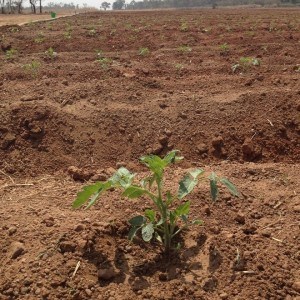
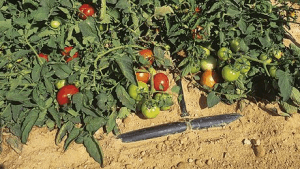
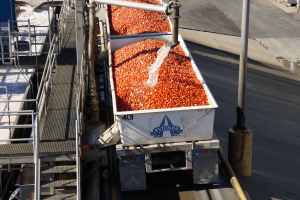
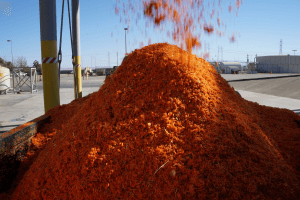
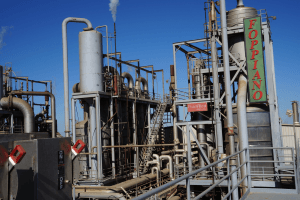
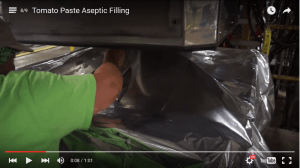
This is a very interesting business model and allows the Nigerians the ability to capture more of the value inherent in their consumption of tomato paste. I see two primary areas that Tomato Jos must master after reading this summary. First, they must develop a tomato paste process which at least matches the competitor’s quality and efficiency of production. Second, they must master the distribution to overcome the inefficiencies of third-world infrastructure and distribution networks. The first and the second require different types of talent and capital to master. I think that it would be smarter for there to be two separate companies: one to master efficient quality production of tomato paste, and one to master getting the tomato paste and other possible value-add to local produce cheaply through the local infrastructure to the retail point, much like we saw with the ITC eChoupal case. With other oil-rich West African States facing the same issues with depressed import prices, Tomato Jos could easily export both models to neighboring countries such as Ghana or Liberia.
Batman is a fan of tomatoes and is heartened by demand from is Nigerian friends!
Great post on a supply side intervention that creates a “buffer” to smooth out infrastructure challenges in the marketplace. Converting tomato to paste arguably solves for an information asymmetry in market demand and pricing for farmers, given that there is a ready buyer in place now. My one large concern is that Tomato Jo’s is distorting the marketplace for raw tomatoes. Often times, public agencies which play a similar role end up “promising” price floors for fresh produce and end up with large amounts of perishable inventory. With rise in yields, Tomato Jo’s has to be able to keep buying larger harvests every year which requires working capital investment. Perhaps more concerning is finding a distribution network for its finished products – if infrastructure remains a challenge, then the market risk is now essentially passed on to the processor without actually removing the risk.